March of Nudis
March is a fascinating month. Not only in Lembeh, where an amazing array of nudibranchs parade through every dive site, but also here in the US, where the month of March brings with it a slew of crazy holidays and observances. The English name “March” comes from the Latin word “Martius”, the first month of the earliest Roman calendar. It was named for Mars, the god of war who was contradictorily regarded as both a warmonger and guardian of agriculture. Based on that, March seems the perfect month to showcase Lembeh critters so diverse that within their populace they embody both the warlike cannibal and the solar farmer. As I looked through my library of nudibranch photos, I imagined a March photo calendar featuring only nudi models to commemorate the month’s special observances. None of the following March holidays or observances are made-up, but some are at least as wild as the nudis I chose to represent them!
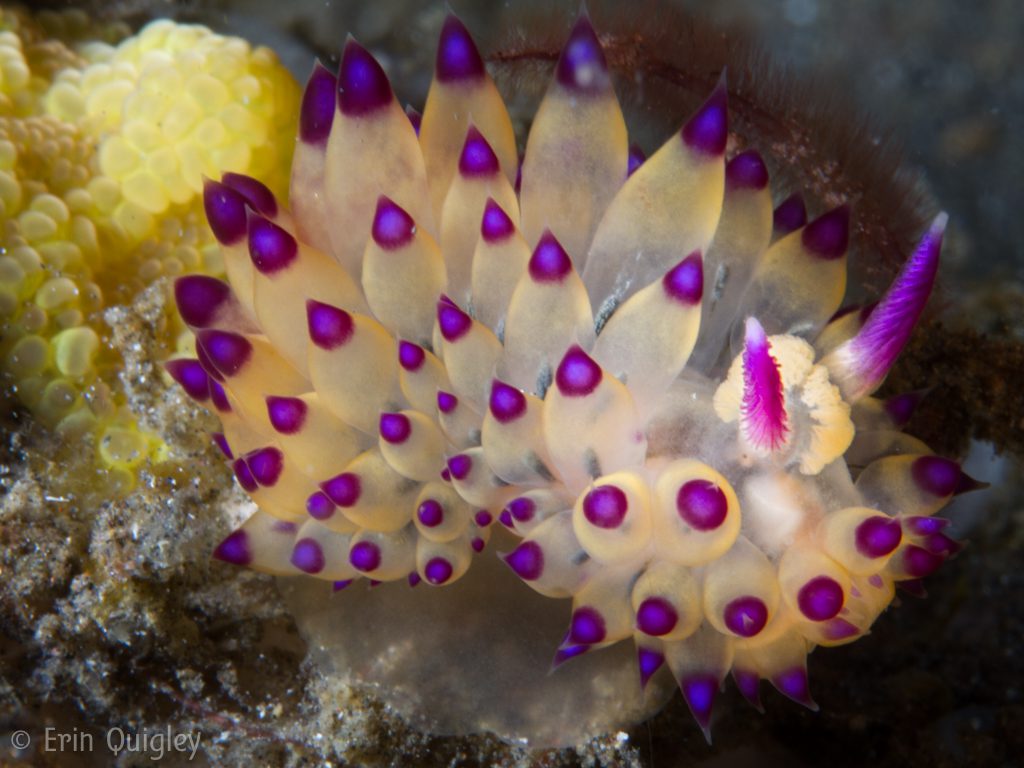
March is Women’s History month. That’s a good one for nudibranchs, since all of them are hermaphrodites (possessing both male and female sex organs) and thus can celebrate women and men’s holidays with equal fervor. In this image you see a Janolus nudibranch – one of my favorites. She/he/it has just finished laying the vivid yellow eggs in the background of the shot. The Lembeh guides are excellent at finding any kind of you nudi you ask for – their training in marine biology serves them – and visiting divers –equally well!
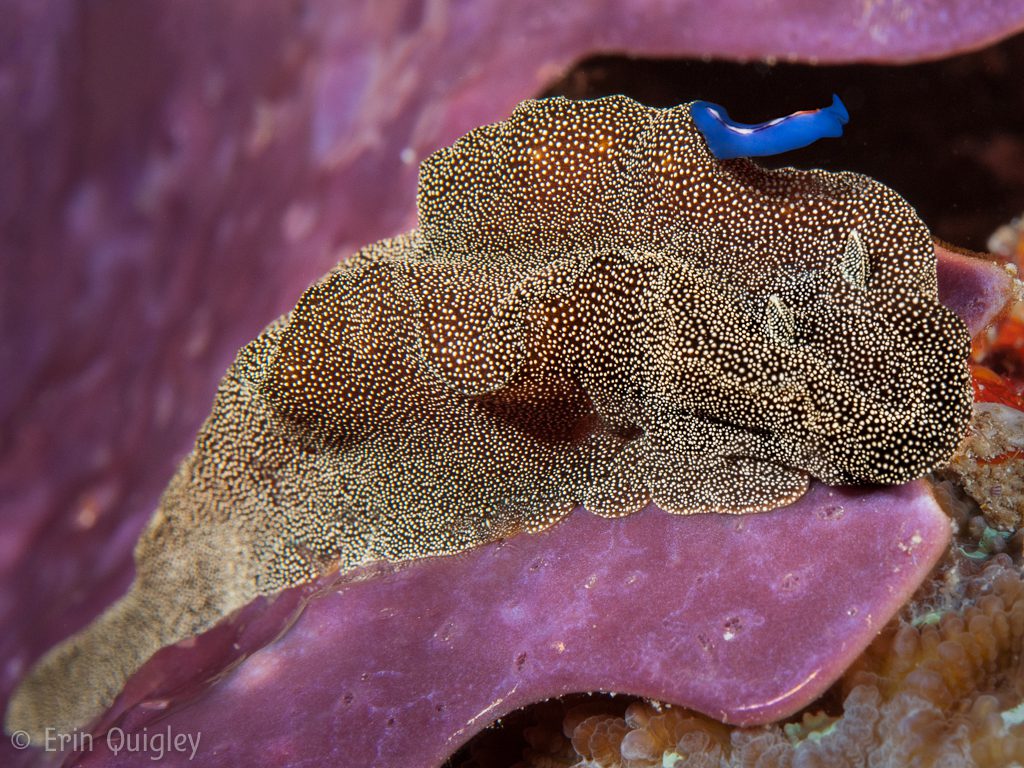
March is Cataract Awareness Month. Most nudibranchs have small, paired eyes, but their vision is cloudy at best, registering little more than light and dark. Instead the animals make their way around the reef using sensory appendages called rhinophores and oral tentacles. Chemical signals help them track down food and potential mates. Here you see a Doriprismatica nudibranch with attendant seeing-eye flatworm. Not really. Flatworms have terrible vision too. Talk about the blind leading the blind…
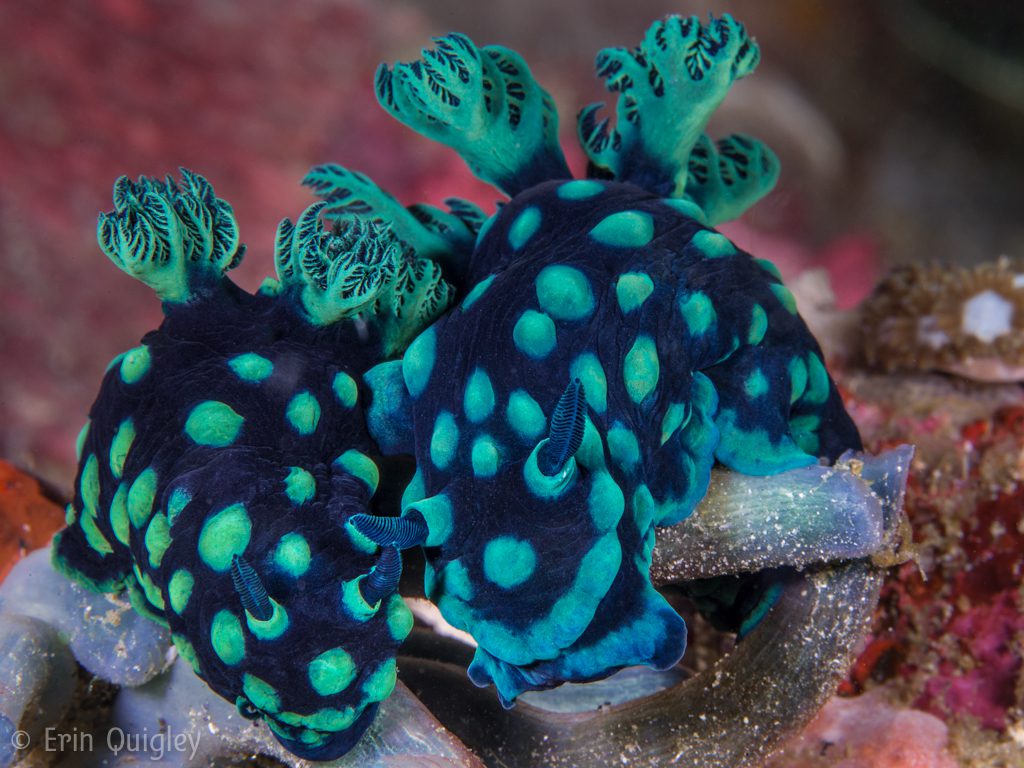
March is Talk With Your Teen About Sex Month. I kid you not. Maybe the powers that be decided March would a good time to approach this delicate topic, coming as it does on the brink of Spring Break. But seriously, if you do have a teen and decide to talk to them about sex this month, nudibranch sex might be a tad complex for beginners. For instance, although nudibranchs possess both sets of sex organs, they can’t impregnate themselves. Instead, mating partners like these Nembrotha nudis fertilize each other so that both become pregnant and lay eggs. Some form mating chains of three or more animals, the slug at the front acting solely as a female and the one at the rear solely as a male. Anyone in between acts as both male and female. Wow. Get a room!
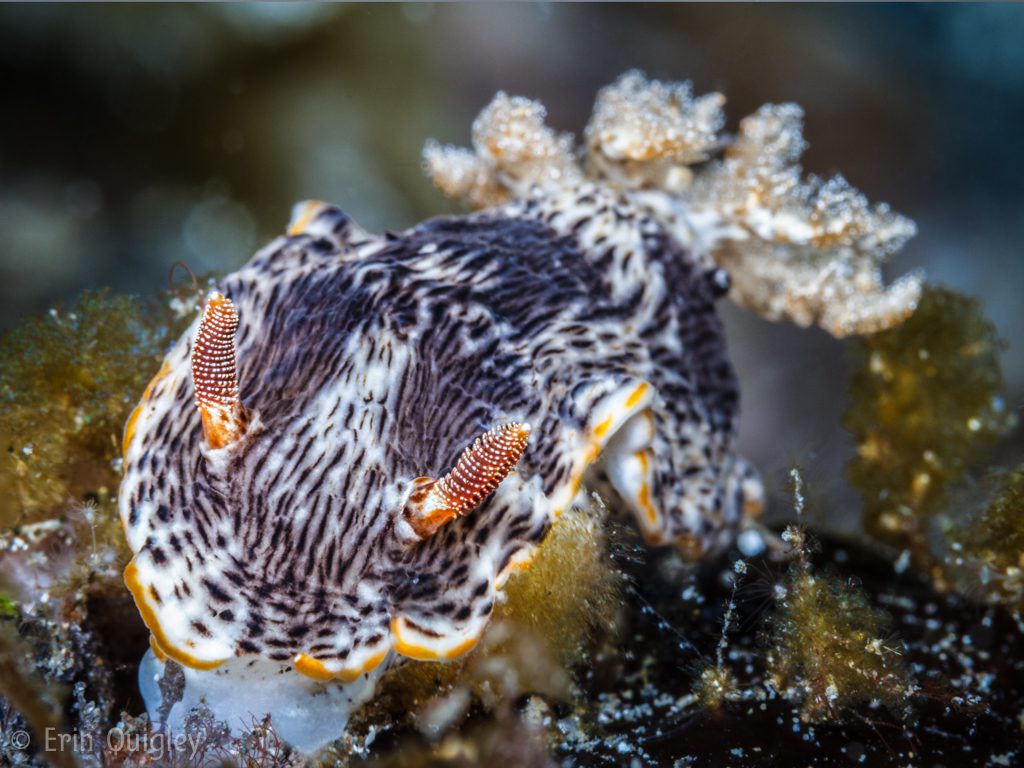
March is Nutrition month, and nudibranchs are what they eat. They often resemble their favorite food in color, form and texture. They’re fussy eaters, preferring a specific type of sponge or other critter. Voracious carnivores (and sometimes cannibals), they spend only 3-5 inactive hours a day. Most of the rest of their time is spent tracking down their chosen prey. A nudi eats using a structure called a radula, which is sometimes compared to a cat’s tongue. It’s a minutely toothed ribbon, which scrapes or cuts food into small pieces before it enters the esophagus. Here, the muscular bulb, which conceals the radula, can be seen as this Goniobranchus Nudi chows down.
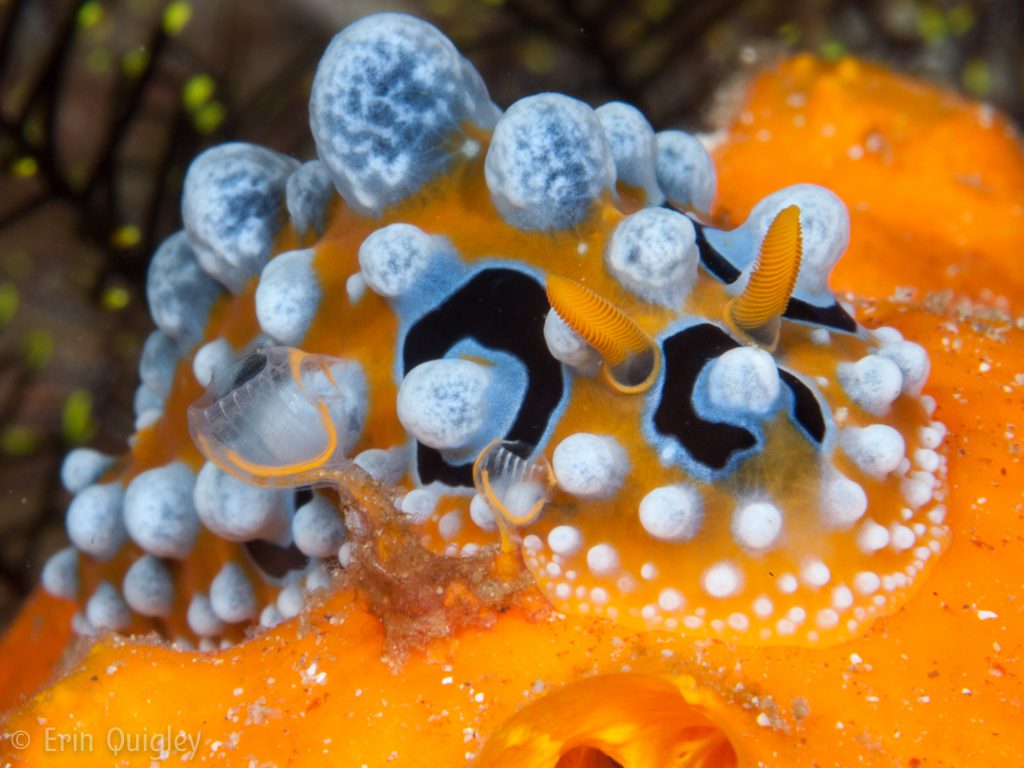
March is Poison Prevention Awareness month. Nudibranchs are often noted for their extraordinary colors, which serve equally well as camouflage, or conspicuous warning to predators of potentially toxic prey. This Phyllidia nudi blends in when feeding, but broadcasts a toxic warning when moving in the open. Though few nudis are fatally toxic, many store and repurpose nematocysts (stinging cells) from the hydroids they eat. Others concentrate distasteful chemicals from ingested sponges to make themselves unpalatable, or even better, automatically release an acid from the skin when irritated. Don’t piss off a nudi!
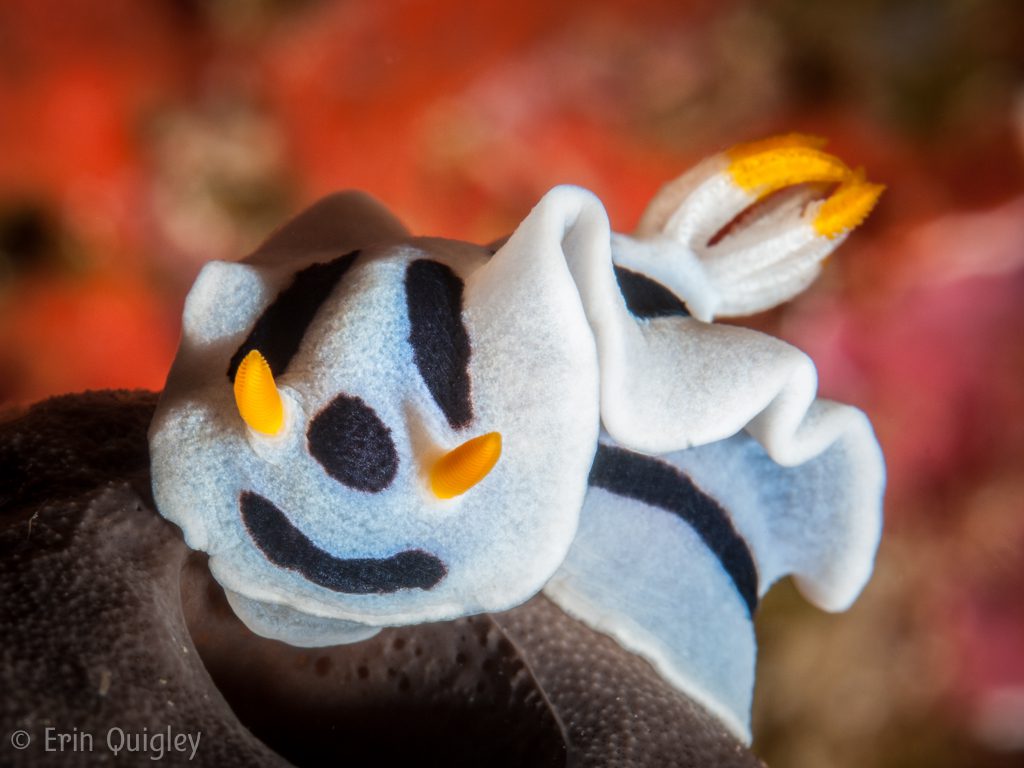
March is Mirth month, and this little Chromodoris sure is happy about something. Although they’re only slugs, it’s amazing how many nudis have goofy, or charming, or terrifying faces. The smiley-faced ones get me every time.
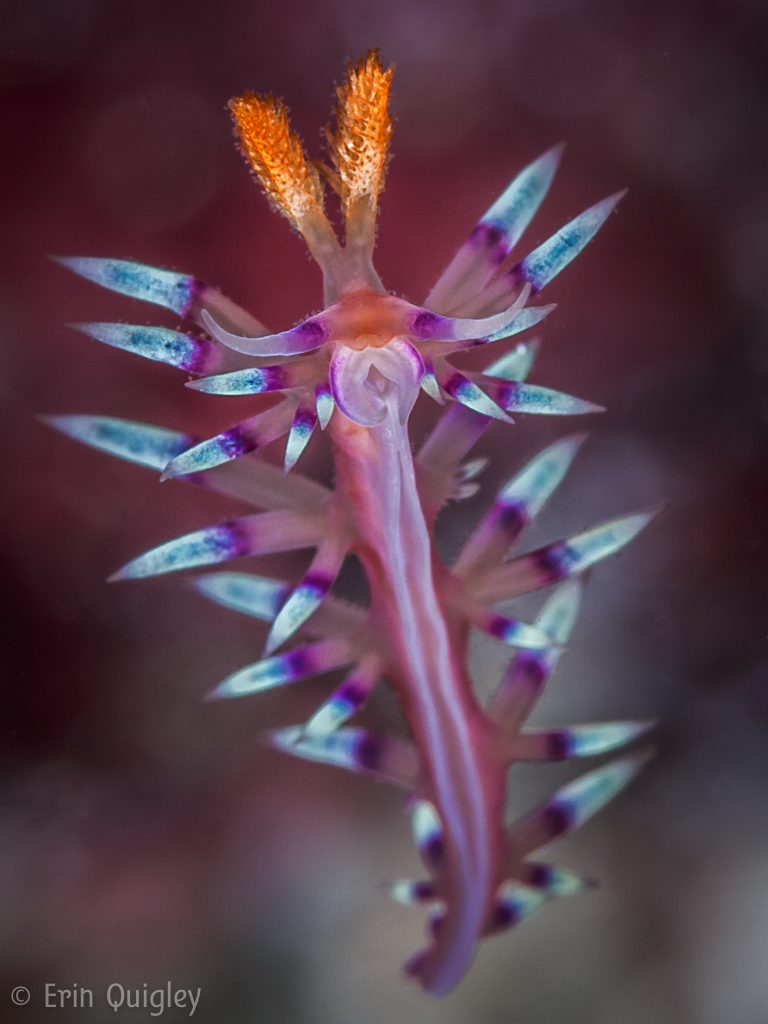
March is Foot Health month. Most nudibranchs move on a muscular foot, which leaves a slimy trail, advertising their location to other sea slugs. Cannibals like Roboastra use the slime to track prey, while Risbecia uses it for its weird trailing behavior. Some, like this “flying” Flabellina, can swim by simply flexing its foot.
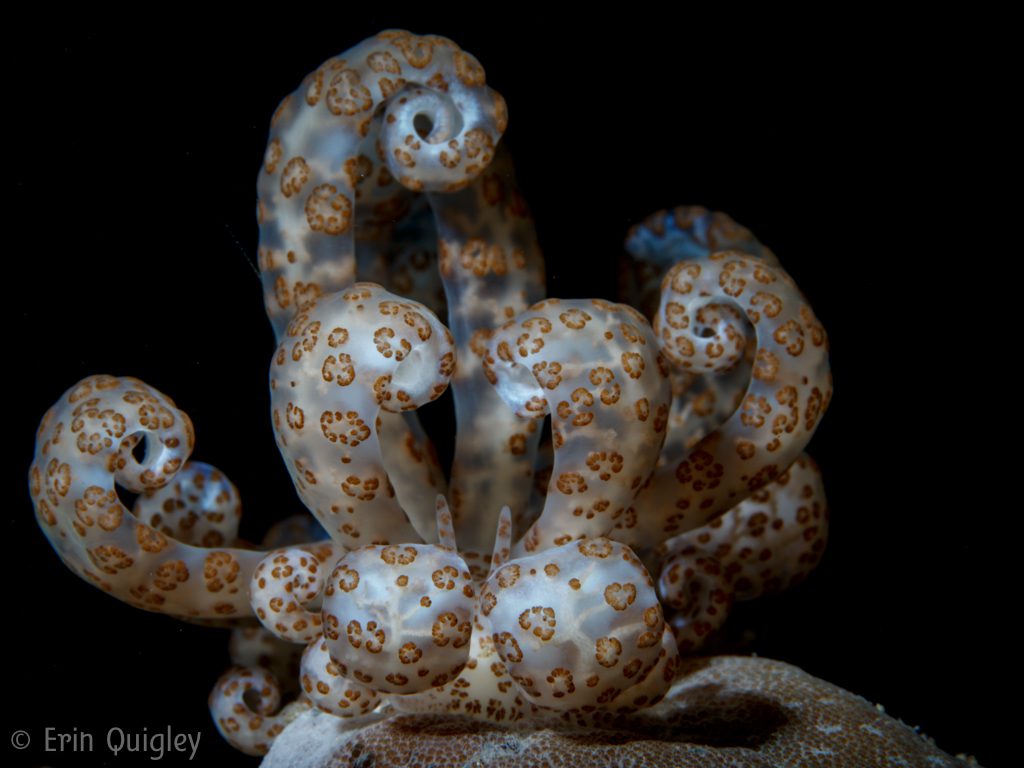
The name for the month of March hails from the Roman god of war, Mars, also known as a guardian of agriculture. Though some nudibranchs are bloodthirsty cannibals, this Phyllodesmium is a peaceful farmer. Known as a “solar-powered nudi”, it harvests living algae from coral and stores it in its cerata, which then function as nudibranch-style solar panels. The symbiotic algae photosynthesize sugar from light, providing a food source for the nudi. Way cool!
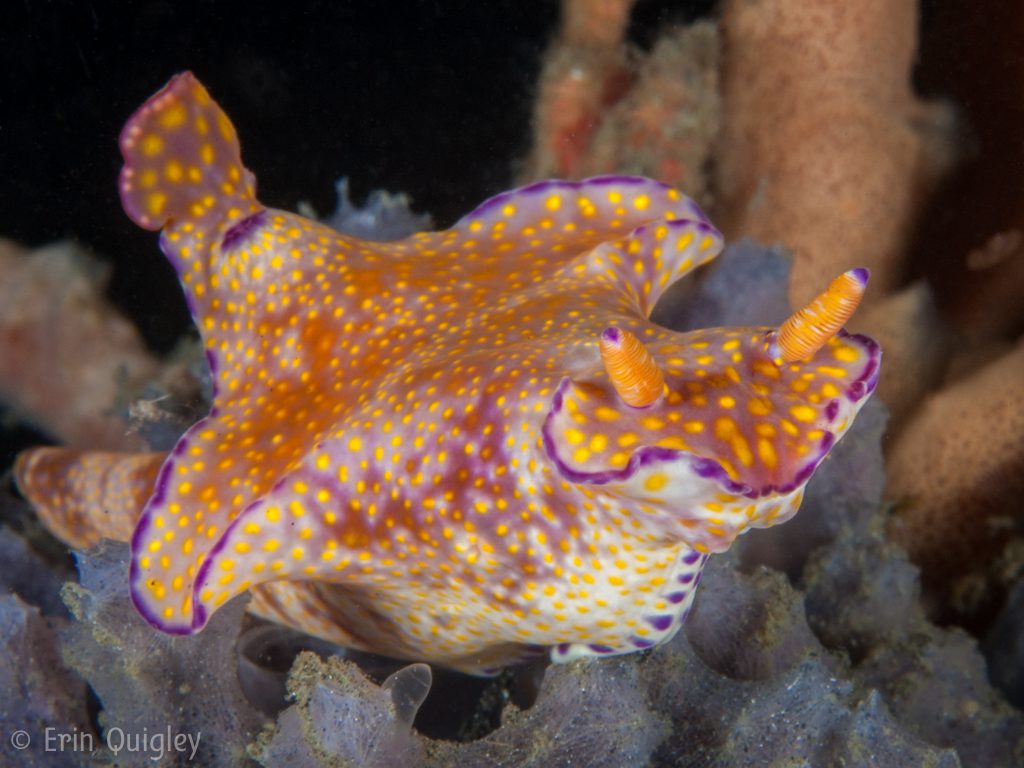
March 2nd is the birthday of Theodore Seuss Geisel, aka Dr. Seuss. What better place to celebrate it than at Lembeh Resort – home to thousands of critters like this Ceratosoma nudi that seem to have come straight out of a Dr. Seuss storybook! “From there to here, and here to there, funny things are everywhere.” – Dr. Seuss
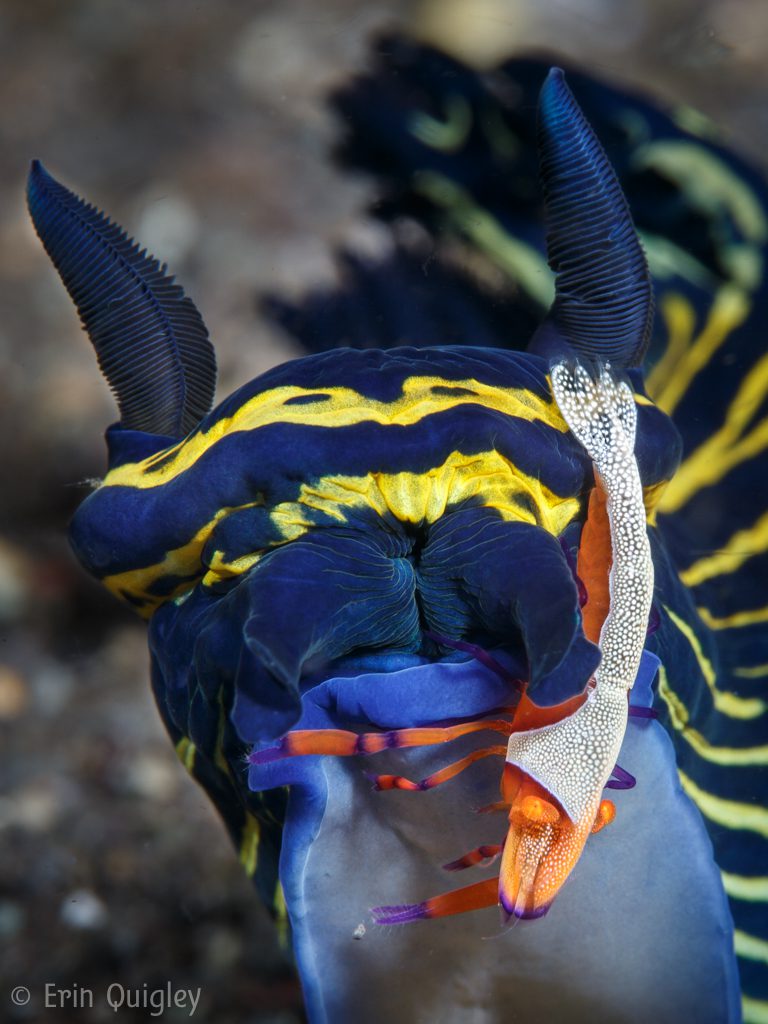
March 6th is Dentist’s day. Some nudis rely on chemicals, rather than teeth, to break down prey, but the cannibalistic Roboastra in this shot feeds voraciously on other nudibranchs, actively hunting them down and demolishing them with teeth and jaws. The radula acts like a rasp, tearing food up and apart for ingestion. It’s a formidable band consisting of rows of chitonous teeth, which can be extended through the mouth and moved up and down by a complex set of muscles. Open wide!
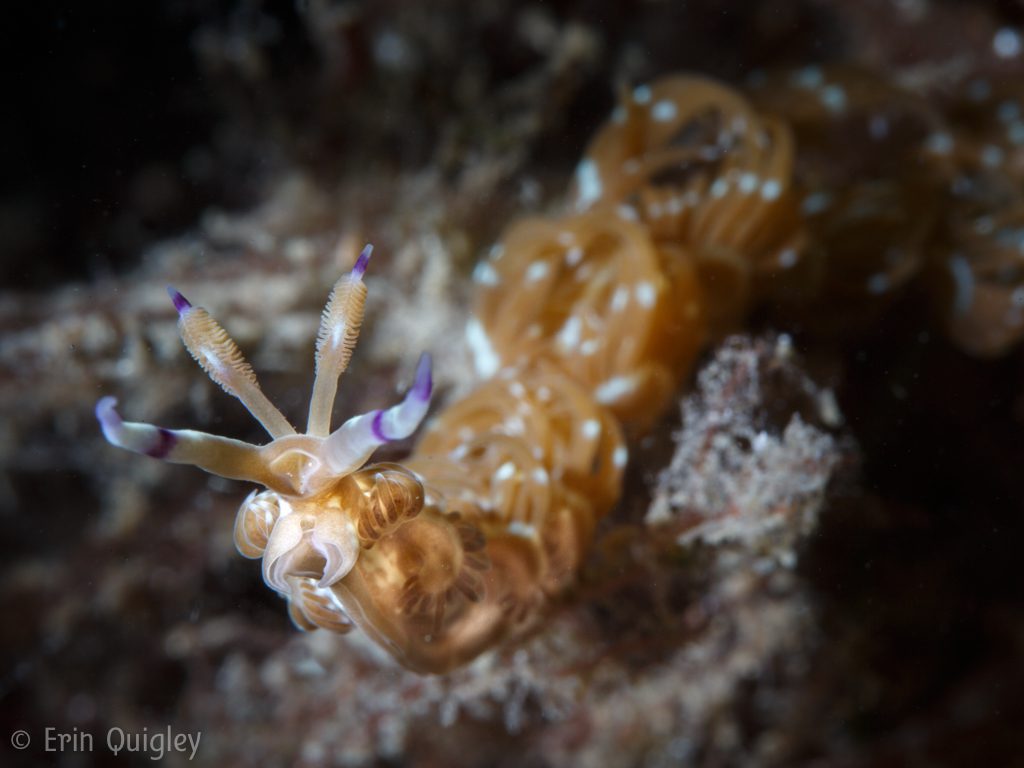
March 10th is Middle Name Pride Day, which is a lot to be proud of when your full taxonomic name is Animalia Mollusca Gastropoda Opisthobranchia Nudibranchia Aeolidacea Facelinidae Pteraeolidia ianthina. With almost 3,000 known species of nudibranch, and new ones being identified almost daily, keeping up with taxonomy is important.
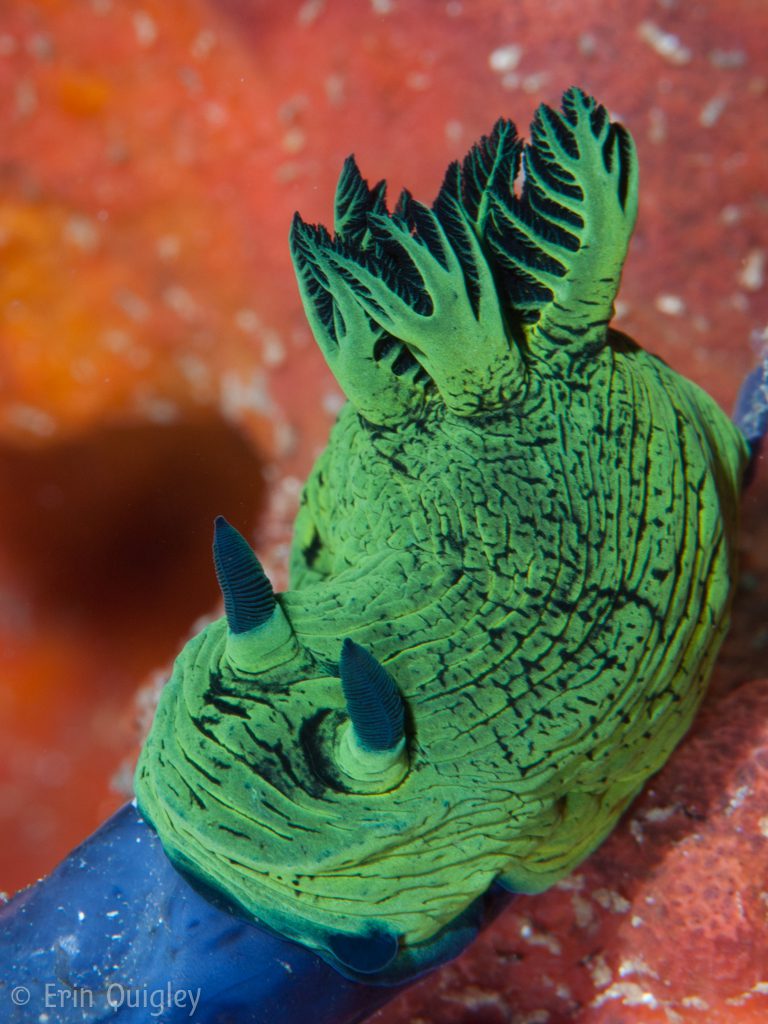
March 17th is St. Patrick’s Day. This shamrock colored Nembrotha is certainly safe from the old St. Patty’s day tradition of pinching anyone who doesn’t wear green. A trick for getting photos with colorful negative space is to start with the background. I saw the orange sponge first, and examined the nearby environment for a long time before finding this nudi. Its vivid color wasn’t apparent until I inadvertently hit it with my light. Must’ve been the luck of the Irish!
 Author : Erin Quigley
Author : Erin Quigley
See more of Erin’s work at her website : GoAskErin and also see her Gallery in our website.



